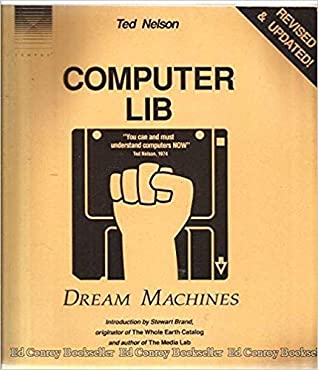What do you think?
Rate this book


330 pages, Paperback
First published June 1, 1974
Until we overthrow the myth that people always have to adapt to computers, rather than the other way around, things will never go right.
No man has a right to be proud that he is preserving and manipulating the ignorance of others.
Civilization, and the bulk of mankind, have about forty years to live…
“Rigid and inhuman” computer systems are the creation of rigid and inhuman people.
Using a computer should always be easier than not using a computer.
I hope that this book will help people who are inconvenienced by computer systems to understand and pinpoint what they think is wrong with the systems—in their data structure, interactive properties, or other design features—and that they will try to express their discontents intelligently and constructively to those responsible. Including, where appropriate, International Business Machines Corporation, Armonk, NY.
It is only by clarifying distinctions that people are ever going to get anything straight.
The computer display screen is the new frontier of our lives.
A timely criticism of computer display is that it needs electricity. But it saves paper, and, importantly, it bodes to save energy as well.
IF WE SWITCH TO COMPUTER SCREENS FROM PAPER, PEOPLE WON’T HAVE TO TRAVEL AS MUCH. Instead of commuting to offices in the center of town, people can set up their offices in the suburbs, and share the documentary structure of the work situation through the screen.
Responsive computer display systems can, should and will restructure and light up the mental life of mankind… The computer’s capability for branching among events, controlling exterior devices, controlling outside events, and mediating in all other events, makes possible a new era of media.
Until now, the mechanical properties of external objects determined what they were to us and how we used them. But henceforth this is arbitrary.
If like the author you are bemused by the great difficulty of getting along with human beings, then the creation of extraneous beings of impenetrable character with vaguely human qualities can only alarm you, and the prospect of these additional crypto-entities which must be fended and placated, clawing at us from their niches at every turn, is both distasteful and alarming.
I’d really have hated to miss being in this field, just for the thrilling madness of it all.